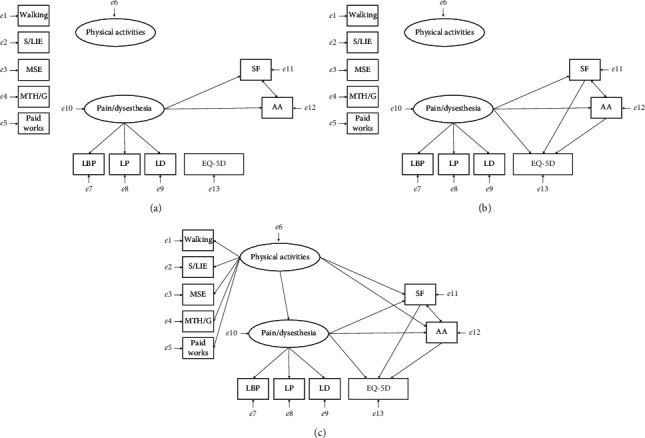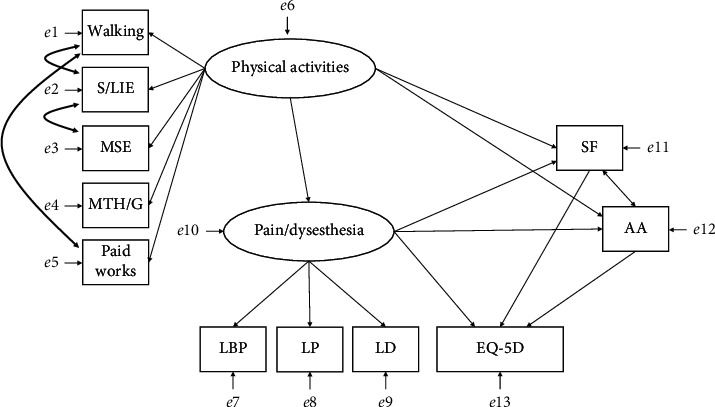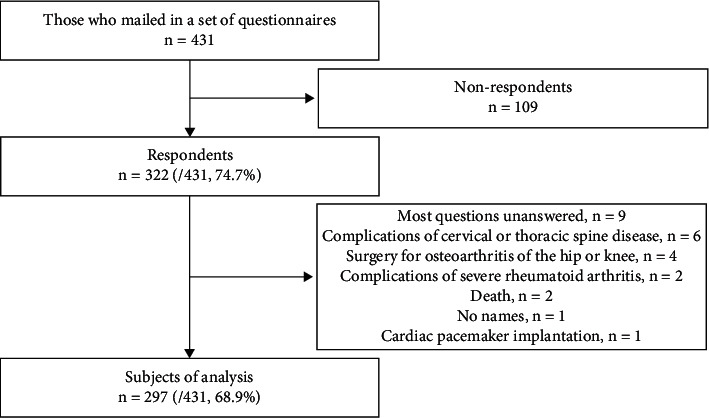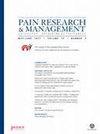预测体育活动改善腰椎手术后疼痛、感觉障碍和运动恐惧症的日本老年人健康相关生活质量的模型验证:结构方程模型
IF 2.5
3区 医学
Q2 CLINICAL NEUROLOGY
Pain Research & Management
Pub Date : 2022-07-16
eCollection Date: 2022-01-01
DOI:10.1155/2022/4147497
引用次数: 0
摘要
目的:本研究评估了一个假设模型的有效性,该模型预测体育活动可改善腰椎手术后疼痛、感觉不良和运动恐惧症的日本老年人健康相关生活质量(HRQOL)。方法:我们纳入了在两家医院接受腰椎管狭窄手术的431例老年患者。使用问卷调查体力活动频率、疼痛、感觉不良、运动恐惧症(躯体焦点和活动回避)和HRQOL。缺失值由随机回归归算补充。我们构建了以下模型。(1)体育活动影响疼痛、感觉不良和运动恐惧症。(ii)疼痛、感觉不良和运动恐惧症分别影响HRQOL。通过结构方程模型对该假设模型进行了验证。基于修改后的索引对模型进行了改进。结果:431名受访者中,297人(中位年龄72岁,65-91岁;158名男性和139名女性)被分析(68.9%)。修正指标改善了模型的拟合,比较拟合指标为0.948,为可接受的;Tucker-Lewis指数,0.919;近似均方根误差为0.048(90%置信区间为0.026-0.069),标准化均方根残差为0.046。体育活动减轻疼痛或感觉不良(标准化通过系数,-0.406)和躯体焦点(-0.301)并因此改善HRQOL的途径是显著的(疼痛/感觉不良,-0.684;躯体焦点(-0.218)。讨论。我们的假设模型预测,在日本老年人腰椎手术后,体育活动可以改善疼痛、感觉不良和运动恐惧症方面的HRQOL,并通过横断面数据进行验证。建立该模型需要基于该模型的身体活动干预研究。本文章由计算机程序翻译,如有差异,请以英文原文为准。



Validation of a Model Predicting That Physical Activities Improve Health-Related Quality of Life in Older Japanese Adults with Pain, Dysesthesia, and Kinesiophobia after Lumbar Surgery: Structural Equation Modeling.
Objectives This study assessed the validity of a hypothesized model predicting that physical activity improves health-related quality of life (HRQOL) in older Japanese adults with pain, dysesthesia, and kinesiophobia following lumbar surgery. Methods We included 431 elderly patients who underwent surgery for lumbar spinal stenosis at two hospitals. The frequency of physical activity, pain, dysesthesia, kinesiophobia (somatic focus and activity avoidance), and HRQOL were investigated using a questionnaire. Missing values were complemented by the stochastic regression imputation. We constructed the following model. (i) physical activity affects pain, dysesthesia, and kinesiophobia. (ii) pain, dysesthesia, and kinesiophobia separately affect HRQOL. This hypothetical model was tested by structural equation modeling. The model was improved based on a modified index. Results Of the 431 respondents, 297 (median age 72 years, range 65–91 years; 158 men and 139 women) were analyzed (68.9%). The fit of the model improved based on the modification index and was acceptable comparative fit index, 0.948; Tucker–Lewis index, 0.919; root mean square error of approximation, 0.048 (90% confidence interval, 0.026–0.069), and standardized root mean square residual (0.046). The paths by which physical activities reduced pain or dysesthesia (standardized pass coefficients, −0.406) and somatic focus (−0.301) and consequently improved HRQOL were significant (pain/dysesthesia, −0.684; somatic focus, −0.218). Discussion. Our hypothesized model predicting that physical activity improves HRQOL in terms of pain, dysesthesia, and kinesiophobia in older Japanese adults after lumbar surgery was validated using cross-sectional data. Interventional studies on physical activity based on this model are required to establish the model.
求助全文
通过发布文献求助,成功后即可免费获取论文全文。
去求助
来源期刊

Pain Research & Management
CLINICAL NEUROLOGY-
CiteScore
5.30
自引率
0.00%
发文量
109
审稿时长
>12 weeks
期刊介绍:
Pain Research and Management is a peer-reviewed, Open Access journal that publishes original research articles, review articles, and clinical studies in all areas of pain management.
The most recent Impact Factor for Pain Research and Management is 1.685 according to the 2015 Journal Citation Reports released by Thomson Reuters in 2016.
 求助内容:
求助内容: 应助结果提醒方式:
应助结果提醒方式:


